
Last night’s lodging was in the quiet village of Oceanside, and after breakfast at Blue Agate Cafe, we were ready for our trek south along Netarts Bay. Our first stop is the home of Jacobsen Salt Company, where they are cooking up local seawater to make some amazing finishing salt. We first learned of the factory and shop on the sea from Allie, who is the owner of Seaside Yarn and Fiber. Later that same night, we were introduced to it at Stephanie Inn in Cannon Beach, which includes it on the table. To top it off, Caroline’s cocktail last night at the Schooner Restaurant & Lounge (where we enjoyed an amazing dinner complete with “Oysters Rockoyaki”) featured a salted rim of Jacobsen Salt. With all that in mind, we would have to visit the shop if they were open this Wednesday morning in the off-season. Sure enough, the place is open, but sadly, there are no “factory” tours due to insurance reasons, as though falling into a boiling vat of salt brine might portend bad things. All the same, almost everything is on display. The bay behind the shop is where they collect the water that is filtered and then cooked down in the large vats in the shed. From there, the salt is collected and put on offer in the shop. This is certainly the most expensive salt we are ever likely to buy, but supporting this kind of artisanal business for enjoying a taste of the Oregon Coast after we return to our desert-dwelling in Arizona is well worth the cost.

Cape Lookout State Park is quiet this morning with nary a soul to be seen or heard out here, just us and all this ocean, gray skies, and forest behind us. Our destination is a mere 60 miles from here. Although the daylight only shines briefly on these late fall days, we would arrive in Newport too early if we didn’t stop along the way to smell the woods and banana slugs.

Speaking of forest or lack of it in this case, this is what clear-cutting looks like. No responsible harvesting happening here; just come in and strip the land bare. Driving past this scarred battlefield feels like open warfare and an assault on visitors who are traveling through trying to appreciate the beauty of the state. Of course, this is privately owned land, but it is still regulated by laws or, in this case, a lack of them. If the Oregon legislature were so inclined, they could put an end to this type of carnage, but in a state with a limited economy, they appear to be beholden to powerful lobbies that must work hard (pay) to ensure the rules remain in their favor.
These lands that face obliteration will be replanted only to be harvested again when it’s economically viable to do so. The old growth obviously will never return, but I also wonder if the biodiversity that had existed prior to the clear-cut will ever return. Then there’s the question of how we disrupt the wildlife that nested or foraged here. What about erosion and pollution? If this were a properly managed tree farm, the harvester might expect to earn about $5,000 per acre, but it’s a wild forest of mixed age and types of trees, so the amount often ends up being less. Once replanted, it takes about 35 years before the acreage can be harvested again.

Fortunately, Oregon hasn’t allowed the majority of the state to be obliterated by stupidity and so we tree-hugging visitors still get to enjoy the greenery even when obscured in a gray shroud of fog. I, for one, prefer the mystery induced by misty roads into dark forests where I might encounter Bigfoot instead of running into anger at witnessing a landscape pillaged of its beauty.
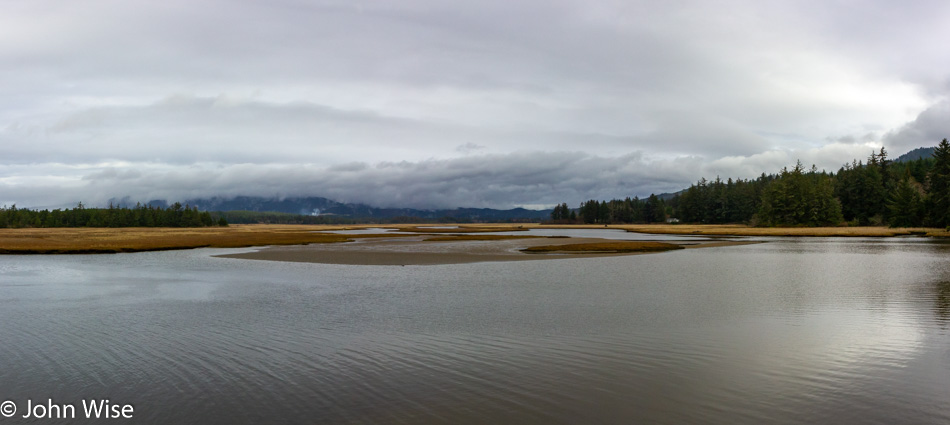
Ah, here we are at Clay Myers State Natural Area and Whalen Island. We’ve experienced tremendous views, mirror-smooth waters, gorgeous mountains in the background, and walks on the island. Today, we are only checking out the view off the brand-new bridge to the island. Turns out there’s been even more work done here in the Sand Lake area.

Welcome to Sitka Sedge State Natural Area. This new explorable corner near Cloverdale has just opened to the public this past June and represents the last intact estuary in the state. Over time, the state park system is going to open a total of six wildlife viewing areas. To the best of our ability to identify such things, there are currently three of those areas that are complete. The first one features squirrels, cute, furry, little squirrels, that stopped to check us out because maybe they thought we were cute, furry, little people.
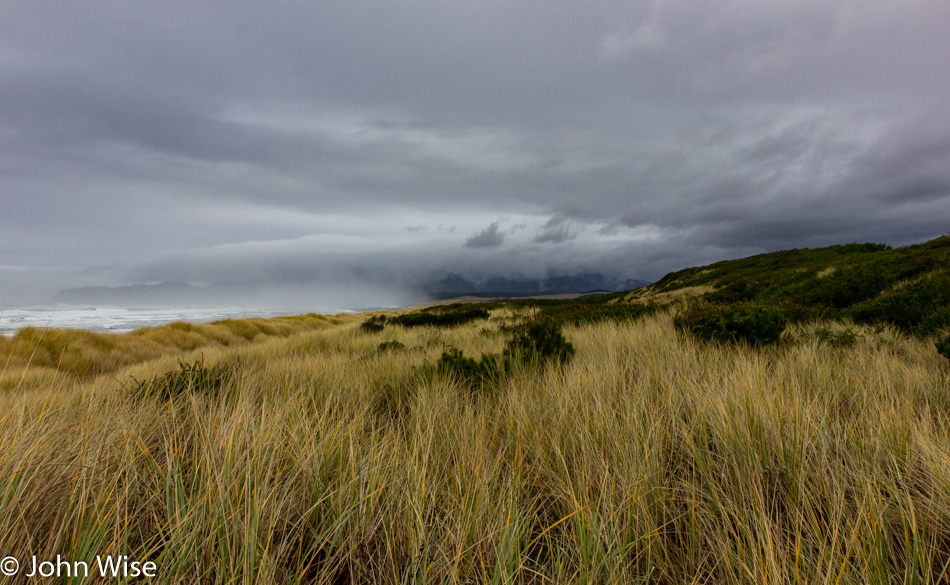
After making our way through the woods, we were greeted by a favorite sight: European beach grass. Just like the yellow gorse found along the coast, this is an invasive species that was intentionally planted by early white settlers who believed they were taming the land. Instead, they created a kind of nightmare for some while producing a lovely golden sand dune waving in the wind for others.

While we’d like to walk up that way to where the Western Snowy Plover nesting area is, the rain is going to keep us away. In any case, we’ve been enjoying them darting away from the surf on their hunt for morsels right here near where we exited the forest.
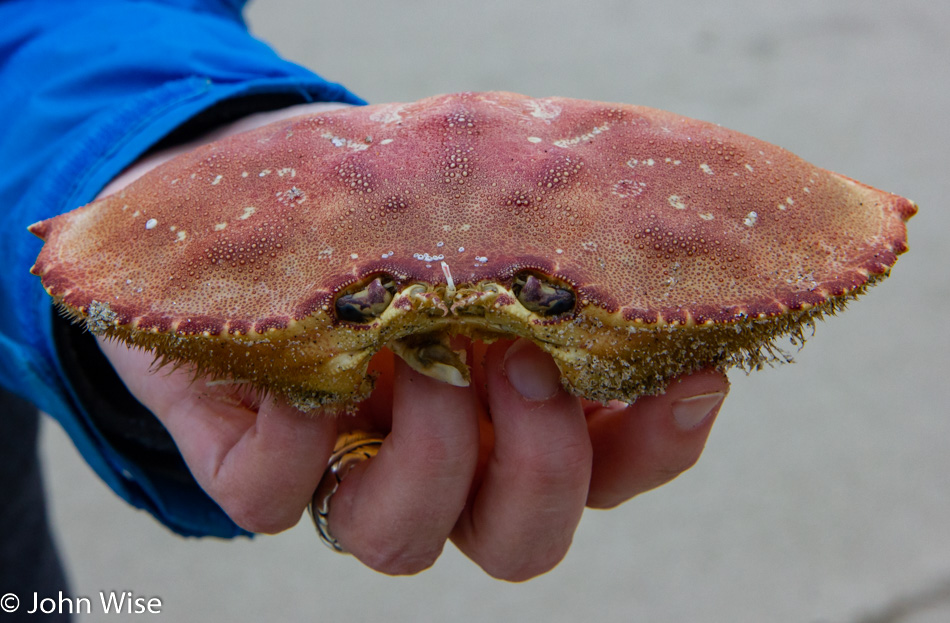
If we had to guess, we’d probably put our money on the thought that a seagull enjoyed a tasty breakfast of crab before our arrival. Strange that we never find legs or claws nearby when stumbling across these shells.

There’s much of this 244-acre park that we won’t be seeing today, but it’s great knowing there’s so much to come back to on a future visit.
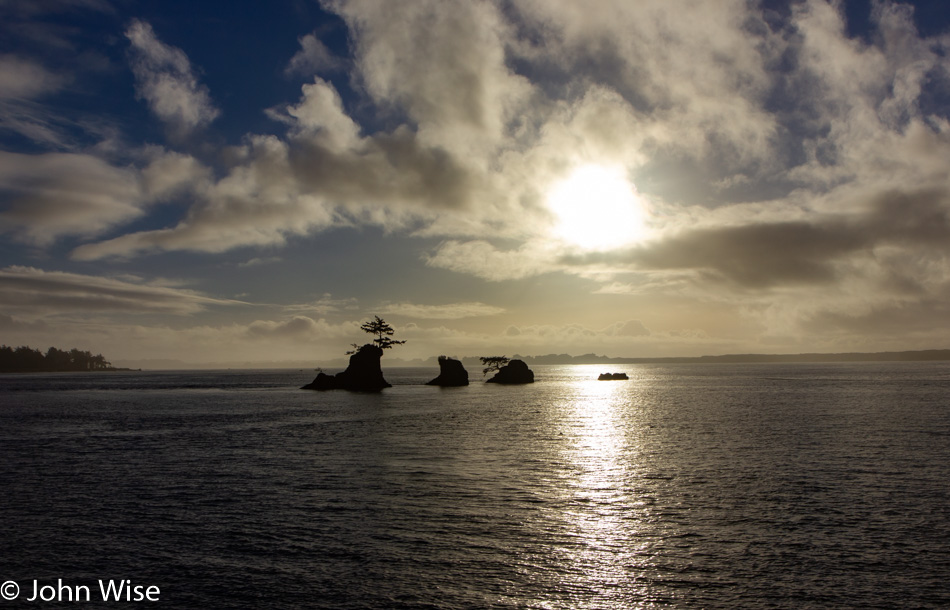
Another sunset at Siletz Bay would be grand, but not being ones to often sit still, we’ll continue to use the available daylight to find impressions of places that sing to our memories.
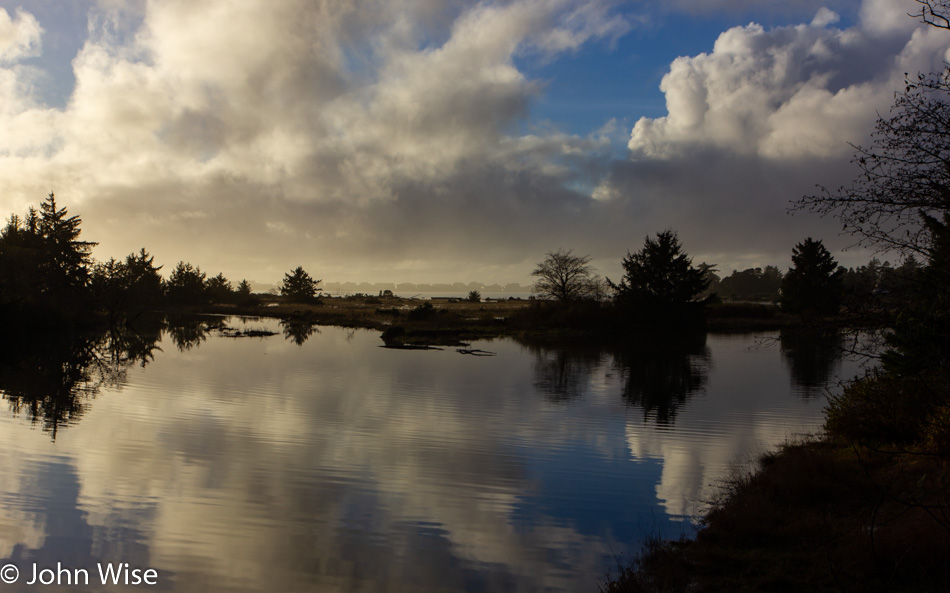
Or that appears to be seen for the first time, allowing altogether new memories to be formed.

Funny how just 100 meters in an open landscape can allow everything to look so different.
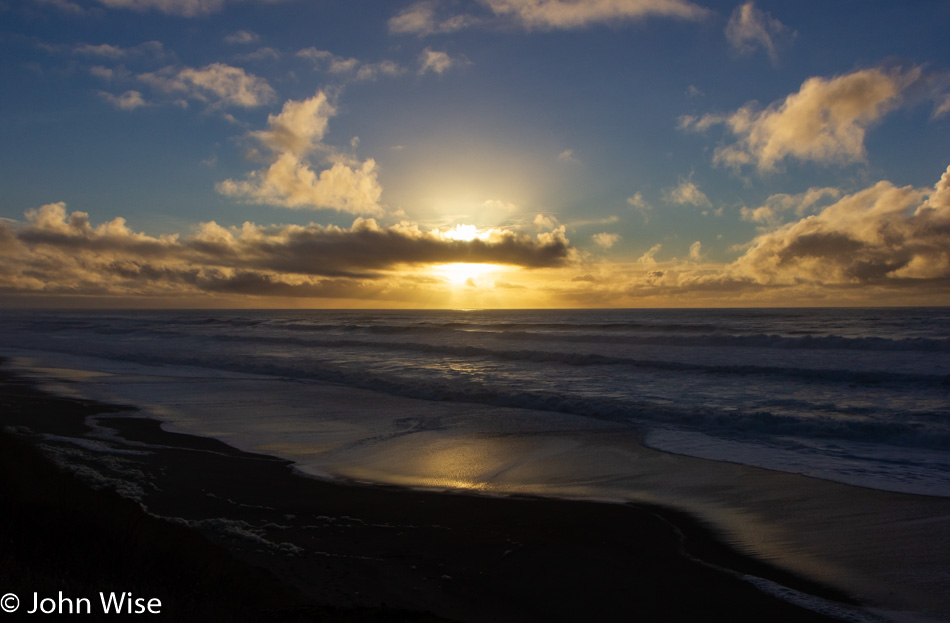
The closing 30 minutes of the day can see us frantically searching for the perfect spot to experience the sunset. I believe I’m probably more conflicted with the inner dialog that asks if this is the most perfect spot or if it is simply just adequate. Caroline, on the other hand, has the patience to be still and believe that anywhere I pull over is likely going to be host to the greatest sunset we’ve ever witnessed. I decide to press on.

Ah, Boiler Bay on a stormy ocean, this must be the perfect place. The sea explodes against the rocks here, jetting upwards in what appears to be at least 100 feet. Only on very calm days does this pullout fail to exhilarate us.

As is usual, I probably spend too much time looking through my camera’s viewfinder, hoping for this shot right here. Did I take 50 or more photos to get this one? It is likely the latter. Caroline meanwhile simply stood at the fence line, taking it all in without a care in the world while I remained busy trying to capture the image that would best represent these closing moments of daylight along the Oregon coast. Oh, how I love this stretch of America, warts and all.